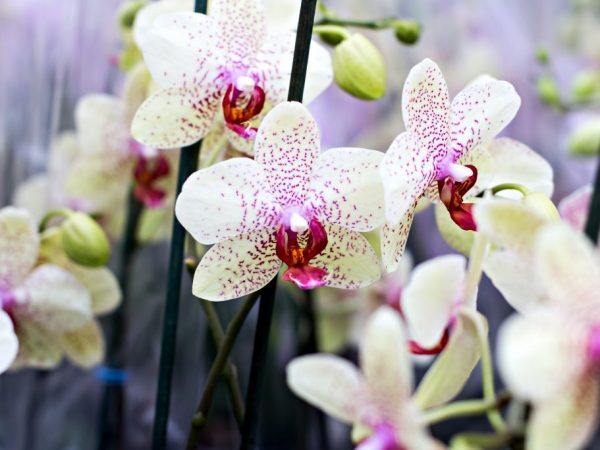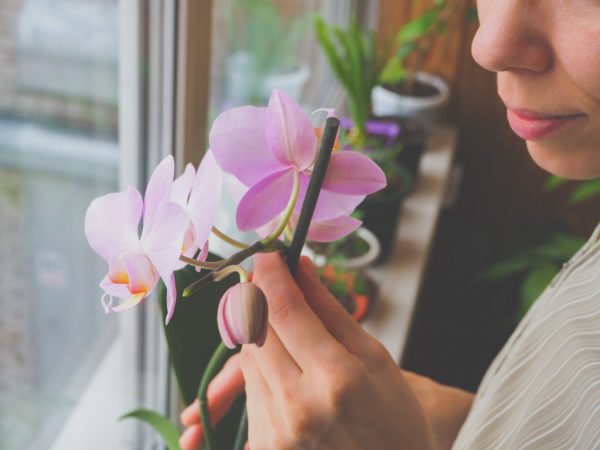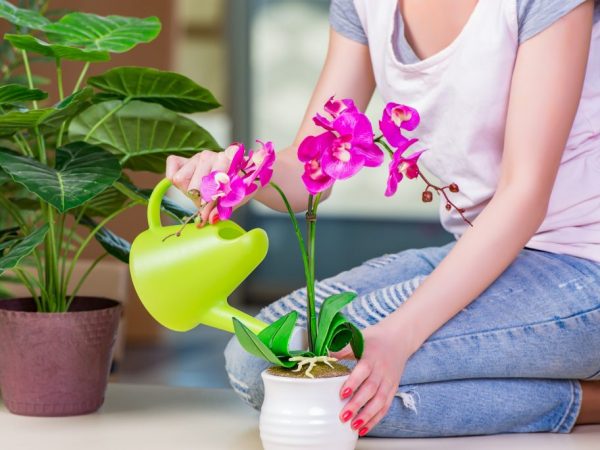Caring for the Dendrobium Nobile orchid after flowering
If the Dendrobium Nobile orchid has faded, this does not mean that the beauty of this plant is over. Crop care should be normalized to allow for re-ejection of flowers. In the best case, the crop will bloom 3-4 times throughout the year.

Caring for the Dendrobium Nobile orchid after flowering
The need for transplanting after flowering
Transplanting a plant after flowering is carried out, depending on certain conditions.
Conditions may vary depending on the care and maintenance of the plant, so it is necessary to study all the nuances in order to avoid mistakes.
Faded right after purchase
It often happens that a store flower fades. Pay attention to its appearance, the condition of the stem and leaves. A transplant is carried out if the following changes have occurred:
- the substrate inside the pot began to actively exfoliate - the reason for this is poor-quality watering, which is carried out with unfiltered water, with increased rigidity;
- the roots began to dry out and rot;
- the presence of parasites on the surface of the flower (beetles, aphids or cobwebs).
The transplant should be done immediately. If the plant feels fine and does not have damaged areas, then the transplant should not be carried out, because this culture is often damaged, which leads to improper development. The optimal time for a planned transplant is 2-4 years.

Transplanting conditions may vary depending on the care and maintenance of the plant.
If the home flower has faded
If a home flower has faded, they pay attention to whether new shoots have appeared, because they usually form during flowering. Then you need to wait for full strengthening, and then you should transplant.
To transfer the plant to another pot, the following ingredients should be used:
- Good quality soil. It should contain pine bark, charcoal and sphagnum. Before planting, the bark is placed in an oven for 20 minutes at a temperature of 80-90 ° C.
- New spacious pot. Its necessity should be judged by the appearance of the pseudobulb. It is better to plant in clay pots, because air is exchanged in them.
- Scissors. They are used to remove damaged roots.
All tools and the pot must be decontaminated. For this, any antiseptic or manganese solution is used (2 g per 2 l of water). Dendrobium Nobile is taken out of the pot, which has faded, and its roots are cleaned of the old soil. After that, it is washed under running water and allowed to drain for 10 hours.
The prepared soil is poured into a pot, after which a drainage system is installed. The soil is again poured on top and the plant is placed in a container. The soil should cover the roots of the flower evenly. Watering is carried out 2 weeks after planting.
Actions after flowering
After the Dendrobium Nobile has faded, it needs high-quality pruning, but it is carried out only after the pseudobulb has begun to dry. To do this, use scissors treated with an antiseptic.If the pseudobulb begins to become covered with green shoots, it is forbidden to cut it off.
The pseudobulb is the organ that allows Dendrobium Nobile to accumulate nutrients and water for further development. For this reason, it cannot be deleted without special need. At such times, it is forbidden to water the plant with copious amounts of water. It is best to put the pot in a cool, dark place and do not touch it until new flowers appear.

Dendrobium Nobile needs high-quality pruning after flowering
Correct watering regime
Orchid Dendrobium Nobile refers to crops that need full, abundant watering. This condition must be observed during the growing season and high ambient temperatures. Watering is carried out both by lowering the pot into the water and by the surface method. Water the crop only after the soil is completely dry. Waterlogging of the soil must not be allowed.
In winter, the orchid is placed in a cool place and watering is stopped. The optimum winter air temperature should be 10-14 ° C. During the day, it is allowed to take it out for several hours in the sun so that the root system does not deform. If, during the rest period, the bulbs began to acquire a wrinkled appearance, it is allowed to spray them with water from a spray bottle.
Top dressing
Caring for Dendrobium Nobile after flowering at home consists in high-quality dressing. During flowering, you should not feed the plant, since this will cause an abundant number of shoots, which will negatively affect the condition of the bushes.
It is better to apply fertilizer complexes only after the flowering is completed. To actively enhance development, nitrogen components are used: 20 g of ammonium nitrate and 10 liters of water are diluted. This solution is used to water the orchid.
The superphosphate solution, which is easy to prepare at home, will enhance the flowering process. It is required to mix 30 g of the drug and 5 liters of water, after which the culture is irrigated with an interval of 10-15 days.
Conclusion
By following all the above recommendations, you will be able to provide the culture with full-fledged care at home and get a healthy and beautiful plant.


